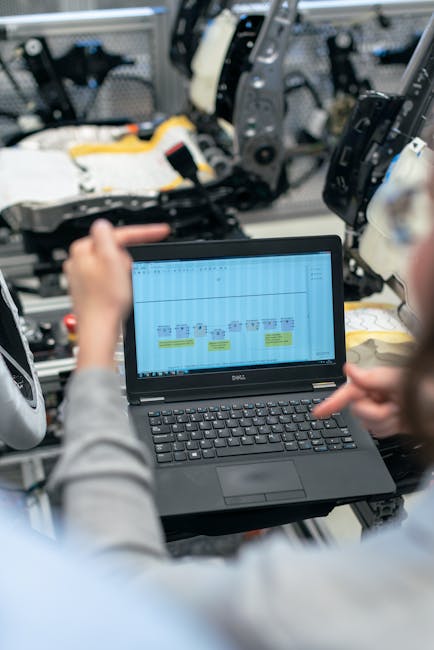Beyond Clicks: Maximizing YouTube Ad Conversions
Understanding the Conversion Landscape on YouTube
Maximizing YouTube ad conversions transcends the superficial metric of clicks, delving instead into tangible business outcomes such as sales, leads, app installs, or specific user engagements that contribute directly to revenue or strategic objectives. While clicks indicate initial interest, they don’t inherently signify value unless they lead to a desired action. A truly effective YouTube advertising strategy focuses on the entire customer journey, recognizing that video’s power lies not just in driving traffic, but in cultivating intent, educating potential customers, and ultimately prompting them to convert. Understanding what defines a “conversion” beyond mere clicks is paramount. For e-commerce businesses, a conversion is often a completed purchase. For SaaS companies, it might be a free trial sign-up, a demo request, or a subscription. Non-profits might define it as a donation or an email list subscription. Even sophisticated engagements like extended watch time on a specific product video, a channel subscription, or a comment showing deep interest can be considered “micro-conversions” that funnel into larger, more impactful macro-conversions. The strategic shift from click-centric thinking to conversion-focused optimization requires a holistic view of user behavior within the YouTube ecosystem and beyond.
The unique challenges of video advertising for conversion lie primarily in its inherently passive consumption model compared to search advertising. Users on YouTube are often in discovery mode, seeking entertainment or information, not necessarily immediate purchasing solutions. This necessitates a more persuasive, emotionally resonant, and education-driven approach to advertising. Unlike a search query where intent is explicit, a YouTube ad must actively create intent or align with existing latent intent. Furthermore, the visual and auditory nature of video means that creative quality and storytelling capability become disproportionately important. A poorly produced or irrelevant video ad, regardless of its targeting, will struggle to convert. Viewers have high expectations for video content, and ads are no exception. They must be engaging enough to prevent skips, compelling enough to hold attention, and clear enough to direct action.
The “intent” spectrum on YouTube is broad, ranging from pure entertainment (low immediate conversion intent) to specific product research (high potential conversion intent). An understanding of this spectrum allows advertisers to tailor their campaigns. For instance, an ad shown before a highly educational video on “how to choose a CRM” might target users with higher conversion intent for CRM software demos than an ad shown before a cat video. Campaigns can be designed for brand discovery, where the primary goal is to build awareness and familiarity, laying the groundwork for future conversions, or for direct response, where the immediate goal is a specific action. A full-funnel approach acknowledges that YouTube can serve all stages: building awareness at the top, nurturing consideration in the middle, and driving direct action at the bottom. A user might first encounter a brand through a captivating brand awareness video, then be retargeted with a product demonstration video, and finally see an ad with a clear call-to-action for purchase. This multi-touch strategy is crucial for maximizing the return on ad spend by guiding the user through a structured journey. Without a strategic understanding of where a campaign sits within this funnel and what kind of conversion it aims to achieve, efforts are likely to be fragmented and inefficient. The journey from initial view to final conversion is rarely linear and often involves multiple interactions across various platforms, making a comprehensive understanding of attribution equally important.
Strategic Foundations for Conversion-Focused Campaigns
Defining clear conversion goals and Key Performance Indicators (KPIs) forms the bedrock of any successful YouTube ad strategy aimed at maximizing conversions. Without precise objectives, it’s impossible to measure success or optimize effectively. Goals must be SMART: Specific, Measurable, Achievable, Relevant, and Time-bound. For example, instead of a vague goal like “get more sales,” a SMART goal would be “achieve 100 new product purchases from YouTube ads at a Cost Per Acquisition (CPA) of $50 within the next quarter.” This specificity allows for clear tracking and performance evaluation. It’s also vital to distinguish between primary conversions (e.g., a purchase, a lead form submission) and micro-conversions (e.g., adding to cart, visiting a pricing page, watching 75% of a video, subscribing to a channel). While micro-conversions don’t directly generate revenue, they indicate user progression through the funnel and can serve as valuable proxy metrics for optimizing campaigns when primary conversions are scarce, or the sales cycle is long. Tracking these intermediate steps allows for early identification of drop-off points and opportunities for refinement. Key performance indicators like CPA (Cost Per Acquisition), ROAS (Return On Ad Spend), and LTV (Customer Lifetime Value) are paramount. CPA directly measures the cost-efficiency of acquiring a conversion. ROAS provides insight into the revenue generated per dollar spent on advertising, critical for understanding profitability. LTV, though harder to measure directly within an ad platform, offers a long-term perspective on customer value, influencing how much one can afford to spend on acquisition. A high LTV allows for a higher CPA, opening up more aggressive bidding strategies and broader targeting. Regularly reviewing these KPIs against predefined goals is essential for continuous optimization.
Audience segmentation and targeting mastery are perhaps the most critical components of a conversion-focused YouTube campaign. Reaching the right people with the right message is fundamental. YouTube offers a plethora of targeting options that, when strategically combined, can pinpoint high-intent audiences. Demographic targeting (age, gender, parental status, household income) provides a foundational layer. Beyond this, detailed audience segments unlock precision. Affinity audiences target users based on their established interests and habits, useful for reaching a broad but relevant group (e.g., “avid travelers” for a travel booking service). Custom affinity audiences offer more granular control, allowing advertisers to define interests by combining keywords, URLs, and apps that users might interact with, tailoring the audience more precisely to niche interests. In-market audiences identify users who are actively researching products or services similar to yours, indicating strong immediate purchasing intent (e.g., “automobiles/used vehicles” for a car dealership). Custom intent audiences take this a step further, allowing advertisers to reach users who have recently searched for specific terms on Google.com, demonstrating highly specific intent for particular products or solutions.
Remarketing strategies are goldmines for conversion campaigns. Targeting users who have previously interacted with your brand – website visitors, app users, or even YouTube channel viewers – leverages existing familiarity and interest, drastically increasing conversion rates. Customer Match allows uploading email lists of existing customers or leads, enabling targeted campaigns to cross-sell, up-sell, or re-engage dormant customers. Similar audiences, generated by Google based on the characteristics of your existing high-value customers, can expand reach to new, highly qualified prospects. Placement targeting enables ads to be shown on specific YouTube channels or videos, useful for contextual relevance or competitive targeting. Keyword targeting, typically associated with search, also applies to YouTube for targeting videos and channels related to specific search terms. Finally, careful combination strategies and exclusion lists are vital. For instance, combining an in-market audience with remarketing to website visitors who didn’t convert, while excluding users who have already purchased, refines the audience to focus only on those most likely to convert next. Excluding irrelevant channels or categories (e.g., kids’ content for a B2B product) prevents wasted ad spend and maintains brand safety.
Budget allocation and bidding strategies for conversion are intricately linked to achieving defined KPIs. Google Ads offers several automated bidding strategies designed specifically for conversions. Target CPA (Cost Per Acquisition) instructs Google to automatically adjust bids to help you get as many conversions as possible at or below your target CPA. This is ideal when you have a clear understanding of your acceptable cost per conversion. Maximize Conversions aims to get the most conversions possible within your budget, without necessarily adhering to a specific CPA, making it suitable when volume is prioritized over cost-efficiency. Target ROAS (Return On Ad Spend) is crucial for e-commerce, allowing you to tell Google the desired return on ad spend (e.g., 400% ROAS means you want $4 back for every $1 spent). Google then optimizes bids to achieve this. Enhanced CPC (ECPC), while less common for conversion-focused video campaigns than the conversion-specific strategies, can provide a slight uplift by automatically adjusting manual bids in real-time if a conversion is more likely. Understanding the nuances of each strategy and when to deploy them is critical. Automated bidding strategies require sufficient conversion data to learn and optimize effectively, typically a minimum of 15 conversions in the last 30 days for Target CPA. Bid adjustments allow for finer control, enabling advertisers to increase or decrease bids based on device (mobile vs. desktop), location, or time of day, optimizing spend towards segments that convert most efficiently. The evolution of a bid strategy is also important: starting with Maximize Conversions to gather initial data, then transitioning to Target CPA or Target ROAS once stable conversion volumes are achieved, is a common and effective progression. Continuous monitoring and adjustment based on performance data are non-negotiable for maximizing conversion efficiency.
Creative Excellence: The Heart of Conversion-Driven Video Ads
Creative excellence is not merely about aesthetic appeal; it is the fundamental engine driving conversion-focused YouTube advertising. Even the most precise targeting and intelligent bidding strategies will falter if the video ad itself fails to resonate, engage, and compel action. The video content is the primary vehicle for your message, and its effectiveness dictates the ultimate conversion rate.
The Hook: Capturing Attention in the First 5 Seconds. In the rapid-fire environment of YouTube, particularly with skippable in-stream ads, the initial 5 seconds are critical. This fleeting window is your only guarantee before a viewer can skip. The hook must be potent and immediately relevant to your target audience. Strategies include:
- Problem-Solution: Immediately present a common pain point your audience faces, then hint at your solution. “Tired of complicated spreadsheets?”
- Intriguing Question: Pose a question that sparks curiosity or directly addresses a viewer’s unspoken need. “What if you could double your leads by next month?”
- Direct Benefit: Lead with the most compelling benefit your product or service offers. “Save 30% on your energy bill starting today.”
- Visual Dynamism: Use rapid cuts, unexpected imagery, or compelling graphics to stand out.
- Strong Audio: Clear, engaging voice-over, impactful sound effects, or a memorable jingle can immediately draw attention. Avoid long, drawn-out intros or disclaimers; get straight to the point. The first few seconds are about stopping the scroll, not necessarily delivering the full message. It’s about earning the next few seconds of viewership.
Delivering Value and Addressing Pain Points. Once the hook has landed, the subsequent seconds must build on that initial intrigue by clearly articulating value and addressing the viewer’s pain points. This is where the ad transitions from attention-grabber to persuasive sales tool.
- Demonstrating Benefits, Not Just Features: Instead of listing technical specifications, show how your product improves the user’s life. A feature is “12-megapixel camera”; a benefit is “capture stunning, professional-quality photos effortlessly.”
- Storytelling that Resonates: Humans are wired for stories. Use relatable scenarios, show before-and-after transformations, or illustrate how your product solves a real-world problem for a character the audience can identify with. Emotional connection often precedes logical decision-making.
- Trust-Building Elements: In a world saturated with advertising, trust is paramount. Incorporate testimonials from satisfied customers, showcase social proof (e.g., “trusted by over 10,000 businesses”), or feature expert endorsements. Authenticity is key; genuine reviews are far more powerful than overly polished, scripted endorsements. Visually demonstrating product quality or ease of use can also build confidence.
Optimizing for Different Ad Formats. YouTube’s diverse ad formats require tailored creative approaches for maximum conversion potential.
- Skippable In-Stream Ads: These are versatile and can range from short (15-30 seconds) direct response ads to longer-form content (1-3 minutes) for more complex products. For conversion, keep them concise and benefit-driven, with a strong CTA. The ability to skip means every second must count.
- Non-Skippable In-Stream Ads: Max 15-20 seconds. These are ideal for reinforcing key brand messages or direct, urgent calls to action, as the viewer cannot bypass them. Make them impactful and to the point, leaving no room for ambiguity.
- Bumper Ads: Max 6 seconds. Perfect for micro-moments. Use these for rapid brand reinforcement, building recall, or creating anticipation. They excel at driving top-of-funnel awareness which can then be retargeted for conversion.
- In-Feed Video Ads (Discovery Ads): These appear on the YouTube homepage, search results, and Watch Next feed. They are intent-driven, as users choose to click on them. This format allows for longer-form, more informative content, as the viewer has actively opted in. Use compelling thumbnails and clear headlines.
- Outstream Ads: These appear on Google video partners’ websites and apps, outside of YouTube. They are mobile-only and start playing without sound, requiring an initial visual impact. They’re good for expanding reach but conversion might be lower than on YouTube due to context.
- Masthead Ads: High-impact, reservation-based ads on the YouTube homepage. Reserved for major product launches or large-scale brand campaigns, they offer massive visibility but are generally cost-prohibitive for direct conversion focus for most advertisers.
Call-to-Action (CTA) Optimization. A powerful ad without a clear CTA is a missed opportunity. The CTA guides the viewer on what to do next.
- Visual CTAs: Use overlays (Companion Banners, Call-to-Action extensions) and end screens within the video itself. Make them prominent, legible, and clickable.
- Verbal CTAs: Explicitly tell viewers what action to take within the ad’s voice-over or dialogue. “Visit our website now,” “Download the app today,” “Click the link below.”
- Text CTAs: Reinforce the call to action in the ad copy or description below the video.
- Urgency and Scarcity: Phrases like “Limited time offer,” “While supplies last,” or “Only 24 hours left” can create a powerful incentive for immediate action.
- Clear, Concise, Benefit-Oriented Language: “Learn More” is standard, but “Get Your Free Quote” or “Claim Your Discount” are more specific and appealing.
- Testing Different CTA Phrasing and Placement: A/B test variations to see which resonates best with your audience. Does a button on the left perform better than one on the right? Does “Shop Now” outperform “Buy Now”?
Landing Page Experience: The Conversion Destination. The journey doesn’t end with the ad; the landing page is where the conversion actually happens. A disjointed or poorly optimized landing page will negate all the efforts of a compelling ad.
- Relevance: The landing page content must be a seamless continuation of the ad’s message. If the ad promises a 20% discount, the landing page must immediately feature that discount.
- Speed: Page load times are critical. Even a one-second delay can significantly impact conversion rates and user patience. Optimize images, code, and server response times.
- Clarity: The value proposition must be immediately clear. Navigation should be intuitive, and the conversion path (e.g., form fields, purchase button) should be obvious and easy to follow.
- Mobile Optimization: A vast majority of YouTube viewing occurs on mobile devices. The landing page must be fully responsive and optimized for touch interactions.
- Reduced Friction: Minimize the number of form fields. Only ask for essential information. Offer guest checkout options. Remove distracting elements.
- A/B Testing Landing Page Elements: Continuously test headlines, images, copy, CTA button colors/text, and form layouts to identify improvements that lift conversion rates. A small improvement on the landing page can have a massive impact on overall campaign performance. The synergy between ad creative and landing page experience is crucial for true conversion maximization.
Technical Setup and Tracking for Accurate Measurement
Accurate conversion tracking is the backbone of any effective conversion optimization strategy for YouTube ads. Without reliable data, all optimization efforts become guesswork. Proper technical setup ensures that every valuable action taken by a user after viewing your ad is attributed correctly, providing the insights needed to refine campaigns and maximize return on investment.
Google Ads Conversion Tracking Setup is the primary mechanism for capturing these crucial actions. This involves placing a snippet of code (the Google Ads global site tag and event snippet) on your website or within your app.
- Website Conversions: These are the most common and include actions like purchases, lead form submissions, sign-ups, or specific page views (e.g., thank you pages). Each conversion action needs to be defined in Google Ads with a specific value (if applicable) and conversion window.
- App Conversions: For mobile apps, conversions can be app installs or specific in-app actions like completing a tutorial, making an in-app purchase, or reaching a certain level in a game. These are typically tracked via a Google Analytics 4 property connected to Google Ads, or directly through an SDK integrated with your app.
- Phone Call Conversions: Google Ads can track calls made directly from your ads (call extensions) or calls to a dynamically generated Google forwarding number on your website after an ad click.
- Import from Google Analytics: For greater flexibility and consolidated reporting, conversions defined in Google Analytics (especially GA4) can be imported directly into Google Ads. This allows you to leverage GA4’s robust event tracking and analysis capabilities.
- Enhanced Conversions: This feature improves the accuracy of conversion measurement by sending first-party hashed customer data (like email addresses) from your website to Google in a privacy-safe way. This helps Google recover conversions that might otherwise be missed due to cookie restrictions or cross-device journeys, leading to more comprehensive reporting and better optimization by Google’s automated bidding.
Google Analytics 4 (GA4) Integration is increasingly vital for sophisticated conversion measurement, especially given its event-based data model. Unlike Universal Analytics, GA4 tracks every user interaction as an event, offering a more flexible and future-proof way to understand user behavior across devices and platforms.
- Event-Based Data Model: This allows you to track virtually any interaction as a conversion. Beyond standard events like ‘purchase’ or ‘form_submit’, you can define custom events for specific micro-conversions relevant to your business (e.g., ‘video_watch_complete’, ‘add_to_wishlist’).
- Connecting Google Ads to GA4: Linking your Google Ads account to your GA4 property allows conversion data to flow seamlessly between the two platforms. This enables you to see how your YouTube ad campaigns contribute to conversions tracked in GA4, and also allows Google Ads automated bidding to leverage GA4 conversion data for optimization.
- Cross-Device and Cross-Platform Tracking: GA4 is designed from the ground up to provide a more unified view of the customer journey across different devices and platforms (web, app), crucial for understanding how YouTube ads influence conversions that might originate on one device but complete on another.
- Utilizing GA4 Insights for YouTube Optimization: GA4’s reporting can reveal detailed user journeys, identify popular content, and highlight user segments that interact most with your site/app after seeing YouTube ads. This deep behavioral insight can inform audience targeting refinements and creative development for future YouTube campaigns.
Google Tag Manager (GTM) for Efficient Implementation. GTM acts as a central hub for managing all your website’s tracking tags, including those for Google Ads and Google Analytics.
- Centralized Tag Management: Instead of directly editing website code for every new tag or change, GTM allows you to manage everything from a user-friendly interface. This significantly reduces the need for developer involvement and speeds up implementation.
- Event Triggering and Variable Configuration: GTM allows you to precisely define when tags should fire (e.g., on a button click, form submission, page load) using triggers. Variables enable dynamic data to be passed with events (e.g., product price, transaction ID), enriching your conversion data.
- Debugging and Preview Mode: GTM’s preview mode allows you to test tags before publishing them live, ensuring they fire correctly and collect the right data, minimizing errors and tracking discrepancies. This is invaluable for ensuring the accuracy of your conversion data.
Attribution Models: Understanding the Customer Journey. A conversion rarely happens due to a single ad interaction. Users often engage with multiple ads or channels before converting. Attribution models determine how credit for a conversion is assigned across these touchpoints.
- Last Click: Gives 100% of the credit to the final ad click before conversion. Simple, but undervalues earlier interactions.
- First Click: Gives 100% credit to the first ad click. Good for understanding initial discovery, but ignores subsequent influences.
- Linear: Distributes credit equally across all clicks in the conversion path.
- Time Decay: Gives more credit to clicks that happened closer in time to the conversion.
- Position-Based: Assigns 40% credit to the first and last click, and the remaining 20% is distributed evenly to middle clicks.
- Data-Driven Attribution (DDA): This is the gold standard. Available in Google Ads (and GA4), DDA uses machine learning to analyze all conversion paths and assigns fractional credit to each touchpoint based on its actual contribution to the conversion. It considers factors like the number of ad interactions, the order of exposure, and the creative assets. DDA provides the most accurate picture of your YouTube ads’ impact.
- The Multi-Touch Conversion Path: Regardless of the model chosen, understanding that conversions are often the result of multiple touches across various channels (e.g., YouTube ad -> Google Search -> Direct Visit -> Conversion) is crucial. Analyzing these paths reveals how different campaigns and platforms work synergistically. By correctly setting up tracking and understanding attribution, advertisers can confidently allocate budgets, optimize campaigns based on actual business outcomes, and demonstrate the true value of their YouTube advertising efforts.
Optimization and Iteration: The Continuous Improvement Cycle
Maximizing YouTube ad conversions is not a set-it-and-forget-it endeavor; it’s a dynamic, ongoing process of testing, learning, and refining. The digital advertising landscape is constantly evolving, and audience behaviors shift, necessitating a continuous improvement cycle fueled by data analysis and strategic iteration.
A/B Testing Best Practices for YouTube Ads are paramount for understanding what truly resonates with your audience and drives conversions. This systematic approach involves creating two (or more) variations of an element (A and B) and showing them to different segments of your audience to determine which performs better against a defined metric.
- Testing Creative Elements: This is often the most impactful area for A/B testing on YouTube. Experiment with different video creative elements:
- Hooks: Test various opening 5-second segments to see which captures attention most effectively.
- Calls-to-Action (CTAs): Try different CTA phrasing (“Shop Now” vs. “Learn More”), button colors, placement, and visual styles. Test verbal CTAs within the video.
- Ad Length: Compare short, punchy ads (e.g., 15s) with slightly longer, more informative ones (e.g., 30-60s) for complex products or services.
- Messaging and Value Propositions: Test different benefits highlighted, emotional appeals, or problem-solution frameworks.
- Visual Styles: Does animation or live-action perform better? What about different color palettes or brand aesthetic choices?
- Music and Voiceover: Different background music or voice-over tones can subtly influence viewer perception and response.
- Testing Audience Segments: While you might initially target broad groups, A/B test narrower, more specific audience combinations. Does an in-market audience combined with remarketing perform better than just an in-market audience? Does a custom intent audience convert more efficiently than a custom affinity one?
- Testing Bidding Strategies: While automated bidding learns, you can still test different configurations. For example, compare a Target CPA campaign with a Maximize Conversions campaign over a specific period, ensuring sufficient conversion volume for each to learn.
- Statistical Significance and Sample Size: Crucially, ensure you run tests long enough and with sufficient impressions/conversions to achieve statistical significance. Don’t make decisions based on anecdotal evidence or premature results. Use A/B testing tools or statistical calculators to determine if the observed difference is real or due to random chance. Avoid testing too many variables at once; isolate one key variable per test for clear insights.
Performance Monitoring and Reporting move beyond basic clicks to focus on metrics directly tied to conversions.
- Key Metrics Beyond Clicks:
- View-through conversions (VTCs): Conversions that occur after a user sees your ad but doesn’t click on it (e.g., they watch the ad, then later go directly to your site and convert). This is especially important for YouTube, where brand awareness and delayed action are common.
- Cost Per Conversion (CPC / CPA): The total cost of a campaign divided by the number of conversions. Directly measures efficiency.
- Conversion Rate: The percentage of ad interactions (e.g., views, clicks) that result in a conversion.
- Return On Ad Spend (ROAS): Total revenue generated from ads divided by total ad spend. Critical for profitability.
- Segmenting Data: Dive deeper into your performance by segmenting data. Analyze conversion rates by device (mobile vs. desktop), audience segment, geography, time of day, and even specific videos or channels where your ads appeared. This granular view helps identify high-performing segments to scale and low-performing ones to pause or optimize.
- Customizable Dashboards: Create dashboards within Google Ads, Google Analytics 4, or third-party tools that display your most critical conversion KPIs at a glance. Regular review of these dashboards (daily, weekly, monthly) is essential for proactive optimization.
Negative Keyword and Placement Management are crucial for preventing wasted ad spend and ensuring brand safety.
- Excluding Irrelevant Channels/Videos: If you’re running on placement targeting, regularly review where your ads are showing. If they appear on channels irrelevant to your product or audience (e.g., gaming channels for B2B software, or content produced for children), add those channels to your exclusion lists.
- Preventing Ad Serving on Inappropriate Content: Utilize topic exclusions or content type exclusions (e.g., “violence,” “tragedy,” “sensitive social issues”) to ensure your brand doesn’t appear alongside content that could damage your reputation. Regularly review placement reports to identify unexpected placements.
Scaling Successful Campaigns requires a methodical approach to avoid overspending or diluting performance.
- Gradually Increasing Budget: Don’t drastically increase budgets overnight. Incremental increases (e.g., 10-20% every few days or weeks) allow the Google Ads algorithms to adjust and continue optimizing without breaking performance.
- Expanding Targeting to Similar Audiences: Once a specific audience segment is performing well, leverage Google’s “similar audiences” feature to find new users who share characteristics with your converting customers.
- Duplicating Successful Ad Groups/Campaigns: For highly successful setups, consider duplicating the ad group or campaign and applying minor tweaks (e.g., slightly broader targeting, a different bid strategy variation) to test scalability.
Troubleshooting Common Conversion Issues is an inevitable part of the process.
- Tracking Discrepancies: If Google Ads reports conversions that don’t match your internal CRM or GA4, investigate immediately. Common causes include incorrect tag implementation, ad blockers, or differing attribution models between platforms. Use Google Tag Assistant and Google Ads conversion diagnostics.
- Low Conversion Rates Despite High Views/Clicks: This often points to an issue with the creative (ad isn’t compelling enough to drive action), the landing page (poor user experience, irrelevance), or audience targeting (reaching the wrong people). Review your ad’s watch time, completion rates, and bounce rates on the landing page.
- Ad Disapproval: YouTube has strict ad policies. Disapprovals can halt campaigns. Understand common reasons (e.g., misleading claims, trademark infringement, adult content) and rectify issues promptly.
- Budget Limitations: If campaigns are consistently hitting budget limits before exhausting their potential, consider increasing budget (gradually) or optimizing for a lower CPA to get more conversions within the existing budget.
This iterative process of monitoring, analyzing, testing, and refining is the hallmark of advanced YouTube advertisers focused on maximizing conversions. It ensures that campaigns remain agile, efficient, and consistently deliver tangible business results.
Advanced Strategies for Amplifying Conversions
Moving beyond the fundamentals, advanced strategies can unlock new levels of conversion performance on YouTube, leveraging emerging trends, interactive features, and cross-channel synergy.
Leveraging YouTube Shorts for Conversion is an increasingly relevant strategy. With the explosive growth of short-form video content, Shorts offers a unique avenue to capture attention and drive action.
- Short-form Video Appeal: The concise nature of Shorts (up to 60 seconds) demands highly engaging, quick-hit content. This format excels at delivering immediate value propositions or creating intrigue that leads to a conversion.
- Direct Response Potential: While often associated with brand awareness, Shorts can be highly effective for direct response. A 15-second “unboxing” video showcasing a product’s key benefit, followed by a clear verbal and visual CTA (e.g., “Shop Now – Link in Bio” or a direct clickable link in the ad format itself), can drive rapid conversions. The immediate, digestible nature reduces friction.
- Integration with Longer Campaigns: Shorts can serve as powerful top-of-funnel content, driving initial awareness or product discovery. Users who engage with a Short can then be retargeted with longer, more detailed video ads or display ads, guiding them further down the conversion funnel. Consider creating “teaser” Shorts that lead to a longer product demo video on your channel, or direct to a landing page. The rapid consumption cycle of Shorts means you can test many creative variations quickly.
Interactive Elements and Extensions enhance the user experience and provide more pathways to conversion directly within the ad unit.
- Lead Form Extensions: These allow users to submit their contact information directly from the YouTube ad itself, without leaving the platform. This significantly reduces friction, as users don’t need to navigate to an external landing page. They are ideal for lead generation campaigns, gathering names, emails, and phone numbers for follow-up. The auto-fill feature using Google Account data makes the process even smoother.
- Product Feeds (for Retail/E-commerce): For e-commerce advertisers using Smart Shopping or Performance Max campaigns, product feeds can be dynamically integrated with video ads. This allows individual products from your inventory to appear alongside or within the video ad, with direct links to product pages. This visual merchandising in the ad itself is highly effective for driving purchases by showcasing relevant items to the viewer immediately.
- Sitelink Extensions: While more common in search ads, sitelinks can also appear with some YouTube ad formats (e.g., TrueView for Action) leading to specific pages on your website beyond the main landing page, such as “Pricing,” “Features,” “Contact Us,” or “Customer Reviews.” This offers viewers alternative conversion paths that align with their specific interests.
- Location Extensions: For businesses with physical locations, showing your business address, phone number, and a map link directly in your ad can drive foot traffic and in-store visits, especially for “near me” searches.
The Role of Influencer Marketing in Conversion Funnels. While often seen as a brand awareness play, influencer marketing on YouTube can be a powerful engine for conversions, especially when integrated strategically.
- Brand Integration vs. Direct Response: Influencers can genuinely integrate your product into their content, building authenticity and trust, which are strong drivers of conversion. For direct response, collaborations might involve specific calls to action, unique discount codes, or direct links provided by the influencer.
- Authenticity and Trust: Viewers often trust influencers more than traditional ads. A genuine recommendation from a respected influencer can bypass skepticism and lead directly to sales. Focus on micro and nano-influencers whose audiences are highly engaged and niche-specific for higher conversion potential.
- Tracking Influencer-Driven Conversions: Implement unique UTM parameters on all links provided by influencers, distinct discount codes, or custom landing pages to accurately track conversions attributed to their campaigns. This allows you to measure the ROI of your influencer partnerships.
- Long-Term Partnerships: Building lasting relationships with influencers can turn them into consistent brand advocates, yielding sustained conversion benefits rather than one-off spikes. Their audience becomes accustomed to and trusting of their recommendations.
Omni-Channel Synergy with YouTube Ads. Maximizing conversions often means recognizing that YouTube is one piece of a larger marketing puzzle. Integrating YouTube ad efforts with other channels creates a powerful, cohesive customer journey.
- Complementing Search, Display, Social Media Ads:
- Search (Google Ads): Use YouTube ads for brand awareness and demand generation. Then, capture high-intent users via Google Search ads when they search for your brand or related keywords. Retarget YouTube viewers with search ads.
- Display (Google Display Network): Retarget users who viewed your YouTube ads with visually compelling display ads featuring strong CTAs.
- Social Media Ads: Maintain consistent messaging and creative themes across YouTube and other social platforms (Facebook, Instagram, TikTok) to create a unified brand experience. Use YouTube ad viewer lists for targeting on other social channels.
- Consistent Messaging Across Platforms: Ensure your value proposition, brand voice, and visual identity are consistent across all channels. This reinforces your message and builds brand recognition, making the conversion path smoother.
- Re-engagement Strategies Across Channels: Leverage remarketing lists from YouTube (e.g., viewers who watched 75% of your ad) to re-engage them on other platforms with different ad formats or messages, guiding them closer to conversion. For example, a user who watched a product demo on YouTube might then see a limited-time offer on Instagram.
Predictive Analytics and Machine Learning are increasingly central to automated optimization for conversion on YouTube.
- Google’s Automated Bidding Leveraging ML: Google’s smart bidding strategies (Target CPA, Target ROAS, Maximize Conversions) are powered by sophisticated machine learning algorithms. These algorithms analyze vast amounts of data (user signals, context, historical performance) in real-time to predict the likelihood of conversion and adjust bids accordingly. Trusting and feeding these algorithms with accurate conversion data is key to their effectiveness.
- Future Trends in Conversion Optimization: Expect continued advancements in AI-driven creative optimization, more granular audience predictions, and enhanced cross-platform measurement. The ability to automatically generate or optimize ad creative variations based on performance data will become more prevalent.
- Understanding and Trusting the Algorithms: While human oversight is always necessary, understanding how Google’s machine learning works allows advertisers to better leverage its power. Provide clear goals, accurate conversion data, and sufficient budget, and the algorithms will typically find the most efficient path to conversions. Avoid excessive manual intervention that can disrupt the learning phase. The future of maximizing YouTube ad conversions lies in a synergistic blend of human strategic insight and machine learning’s analytical power.











